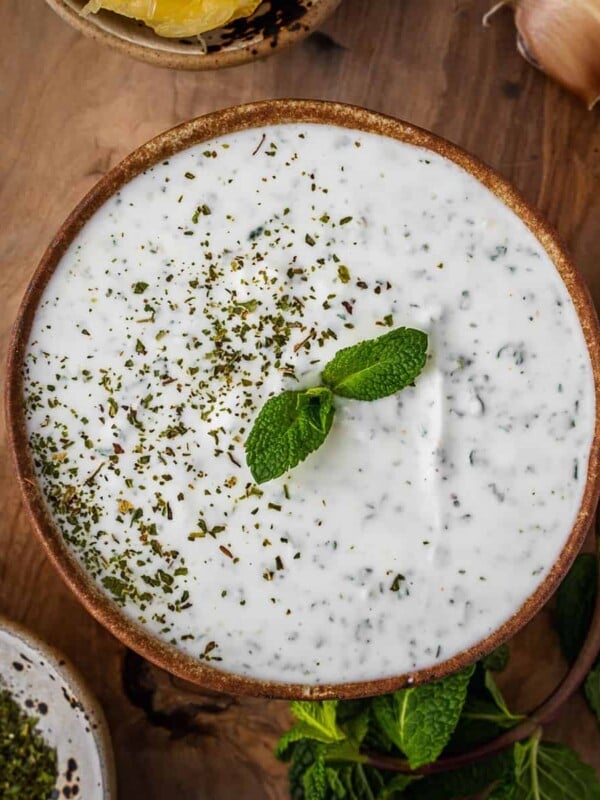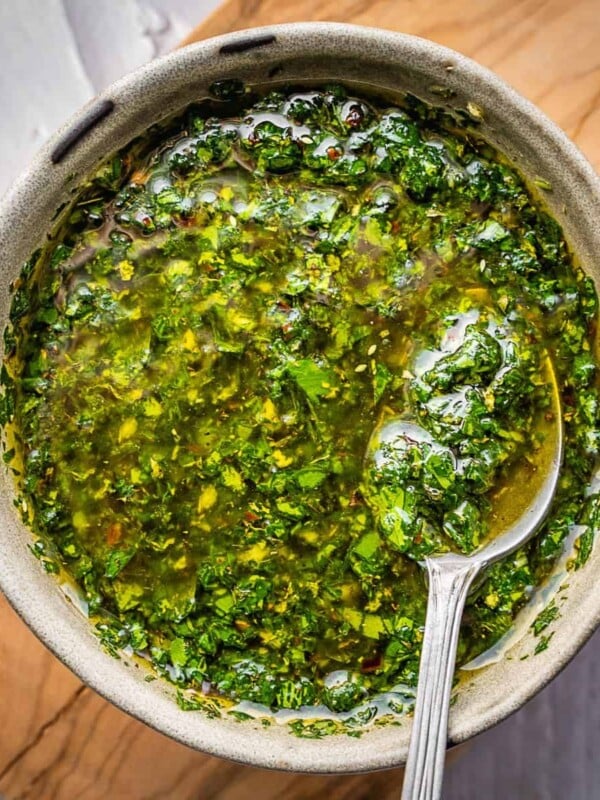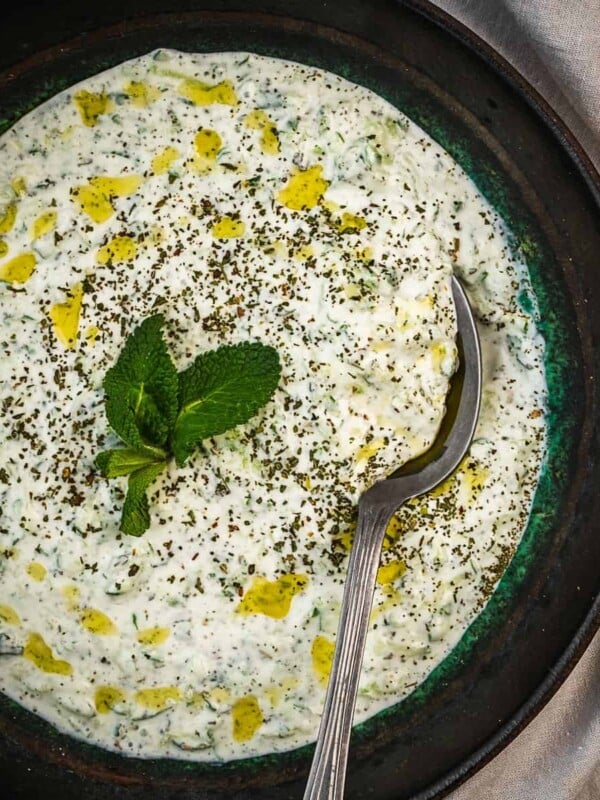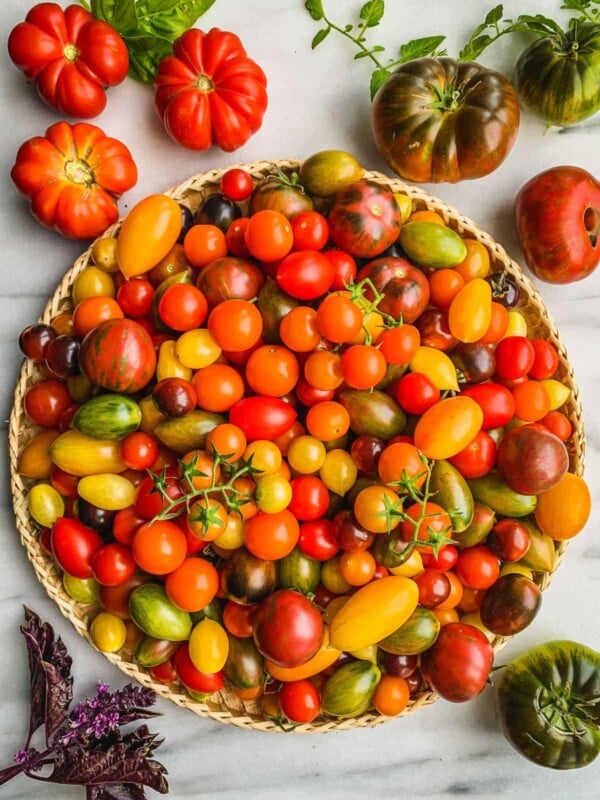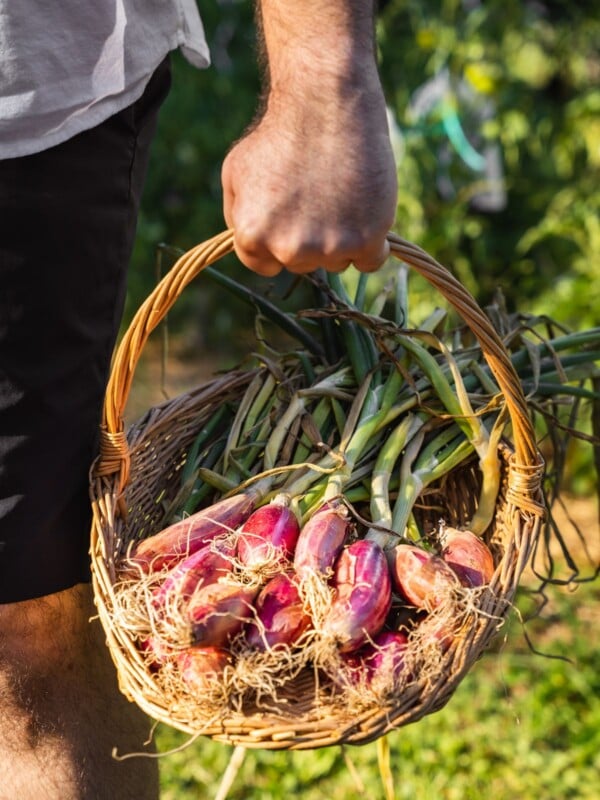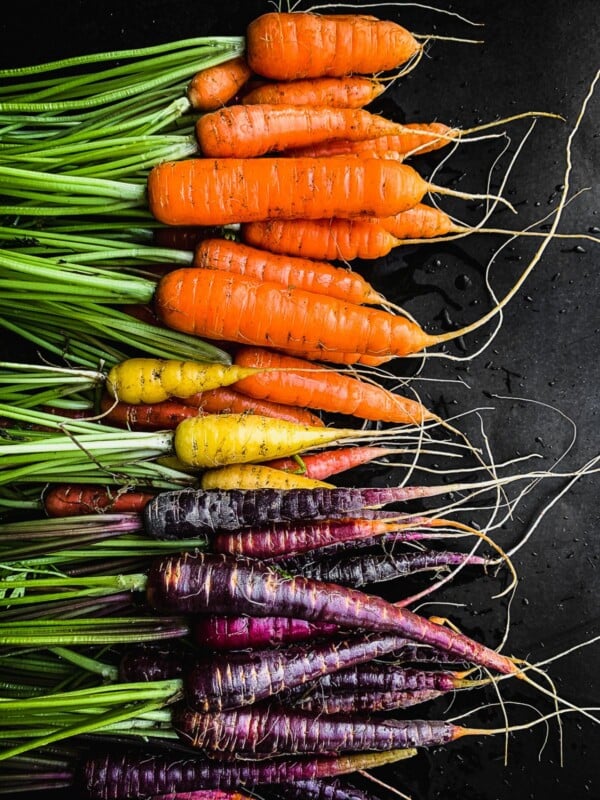Mint is a fragrant herb belonging to the Mentha genus, encompassing several species such as peppermint and spearmint. It is used in many culinary, medicinal, and cosmetic applications. It is easy and rewarding to include in your garden.
This post covers everything you need to know about this herb, including different varieties, culinary uses, growing, storing, preserving, substitutions, and recipes.

Table of Contents
History
Mint is believed to be native to the Mediterranean region, including parts of Europe, North Africa, and Asia, although it has spread worldwide.
The ancient Greeks and Romans valued mint for its aromatic properties and believed it had beneficial effects on digestion. In ancient Rome, it was used to flavor sauces and wines.
During the Middle Ages, it became a symbol of hospitality and was often strewn on floors to freshen the air. It was also used for medicinal purposes, believed to ward off illness.
Mint played a role in the development of the spice trade. In the 18th century, American colonists brought various varieties with them, contributing to its popularity in the New World.
Culinary uses
Mint is a versatile herb celebrated in various global cuisines for its refreshing and aromatic qualities. It has a refreshing, cool, and slightly sweet taste and can be found in many culinary applications, from savory meat-based dishes to tea to dessert.
In Middle Eastern and Mediterranean cooking it’s commonly used in salads (like Authentic Fattoush), dips (like the yogurt based dips Turkish Cacik and Persian Mast-o Khiar), and main dishes, while Indian cuisine features mint in chutneys and curries. North African dishes use it in tagines and tea.
Southeast Asian culinary traditions use mint to add freshness to spring rolls and salads. In Mexico, it finds its way into salsas and salads, contributing a cooling element. Its popularity spans desserts, beverages, and savory dishes, showcasing mint’s adaptability and ability to complement a wide range of flavors.

Varieties
There are many different varieties to choose from; some of the more common are:
- Spearmint (Mentha spicata) is popular to grow due to its mild, sweet flavor.
- Peppermint (Mentha × piperita) has a strong menthol flavor, especially compared to spearmint.
- Chocolate Mint (Mentha × piperita ‘Chocolate’) has a slight chocolate flavor.
- Apple Mint (Mentha suaveolens), also known as pineapple mint, is valued for its fruity aroma.
- Orange Mint (Mentha × piperita ‘Citrata’) has a citrusy aroma.
- Corsican Mint (Mentha requienii) is a low-growing mint with a strong peppermint flavor and is often used as a ground cover.
Other Uses
Mint serves many purposes. It can be used for medical reasons like alleviating indigestion or bloating, headache relief, or clearing congestion. It is also used in aromatherapy, cosmetics, skincare, and insect repellent. Mint is also commonly added as a flavor, such as in toothpaste and mouthwash.
High-level nutritional information
Mint is a source of Calcium, Iron, Magnesium, Phosphorus, Potassium, Zinc, Copper, Manganese, and Vitamin C.
How to Grow
The most important thing to know about growing mint is that it establishes and spreads extremely easily via underground runners. Be careful where you plant it. If you don’t want it to take over, keeping it in a container is best. If you plant it in the ground, you can dig it up and divide it to control the spread, but keeping it in a container is much easier.

Mint is a perennial and will come back every year. It is one of my favorite herbs, and is featured in my 8 Best Herbs To Grow post.
The best way to start it is through a start or propagation. To propagate, clear the lower leaves on your cutting and immerse in water. Pot it up once you see visible roots.
Mint prefers rich, well-draining soil. It will grow in full sun to partial shade. Mint doesn’t require too much fertilization; just side-dressing with compost a couple of times a year is enough. Water when the top inch of soil is dry.
To encourage more bushy growth, regularly prune your mint by cutting or pinching off the tops of the stems. Avoid harvesting more than one-third of the plant at a time to ensure continued growth
Culinary Substitutions
In terms of the menthol flavor and the slightly cooling effect that you get from mint there is no direct substitute. However, there are several options you could consider that will give you a similar freshness and pop of flavor.
- Basil: Basil shares similar flavor profiles with mint; it offers a hint of sweetness and a slightly peppery note, which will work in many recipes.
- Cilantro: Cilantro provides a fresh, citrusy flavor reminiscent of mint’s brightness, especially in savory dishes. Remember that cilantro has a distinct taste, so it may only work well in some recipes that call for mint.
- Lemon Balm: Lemon balm is a member of the mint family and shares some flavor characteristics similar to mint but also has a lemony aroma. It can substitute for mint in teas, salads, and desserts, especially when a citrusy note is desired.
- Parsley: Parsely’s fresh, grassy taste can complement many dishes similarly to the menthol flavor with mint. It works well as a garnish or an ingredient in salads, sauces, and soups.
- Tarragon: Tarragon offers a distinct flavor profile with hints of anise and a slightly minty undertone, making it a unique alternative to mint in specific recipes. It pairs well with poultry, seafood, and vegetables.

How to Store
It is best to harvest mint and use it as needed; however, you can store it in the fridge. Put the stems in a cup of water and cover the leaves loosely with a plastic bag. Change out the water as needed. Alternatively, you can wrap it in a paper towel and place it in a plastic bag.
Recipes that Feature Mint
Levantine Recipes
Preservation
Appetizers
Levantine Recipes
How to Preserve
- Freezing: Preserves the best flavor. Pick the leaves, wash, spin dry in a salad spinner, chop (or not), put in a freezer-safe container, and freeze. For best results, you can flash freeze on a sheet tray and then transfer to a container. The leaves will be wilted and discolored when you use them, so this is best when used in cooked dishes.
- Drying: Dried mint maintains its flavor very well. To dry, hang the stems upside down in a well-ventilated area and out of direct sunlight until dry. Then, remove the leaves from the stem and store them in an airtight container in a dark place. Alternatively, you could use a dehydrator. Check out my Herb Drying post for more details.
- Extract: You can make extract by infusing mint leaves in alcohol. This works well for making drinks or desserts later.
If you have any questions, please take a moment to leave a comment below. It’s such a help to others who want to try the recipe. For more Urban Farm and Kitchen, follow along on Instagram, Facebook, and Pinterest, visit the Urban Farm Shop, or subscribe for new posts via email.
